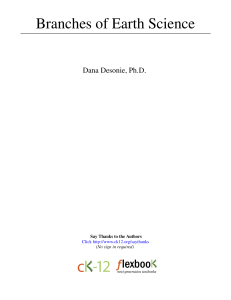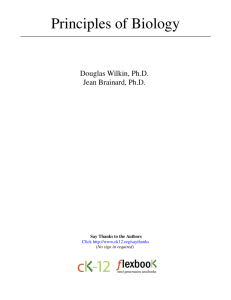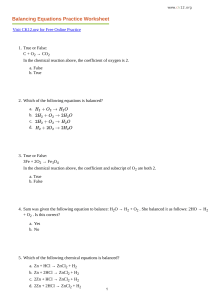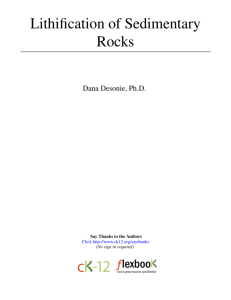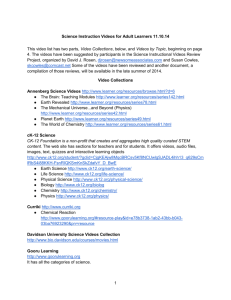Branches of Earth Science
advertisement
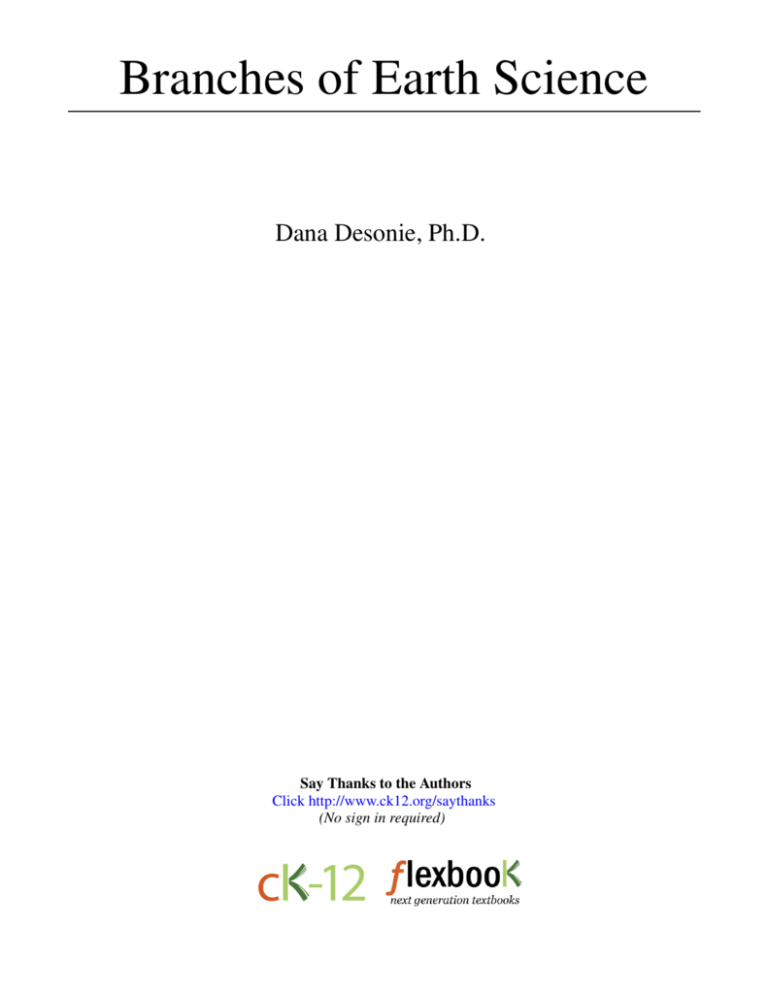
Branches of Earth Science Dana Desonie, Ph.D. Say Thanks to the Authors Click http://www.ck12.org/saythanks (No sign in required) To access a customizable version of this book, as well as other interactive content, visit www.ck12.org CK-12 Foundation is a non-profit organization with a mission to reduce the cost of textbook materials for the K-12 market both in the U.S. and worldwide. Using an open-content, web-based collaborative model termed the FlexBook®, CK-12 intends to pioneer the generation and distribution of high-quality educational content that will serve both as core text as well as provide an adaptive environment for learning, powered through the FlexBook Platform®. Copyright © 2014 CK-12 Foundation, www.ck12.org The names “CK-12” and “CK12” and associated logos and the terms “FlexBook®” and “FlexBook Platform®” (collectively “CK-12 Marks”) are trademarks and service marks of CK-12 Foundation and are protected by federal, state, and international laws. Any form of reproduction of this book in any format or medium, in whole or in sections must include the referral attribution link http://www.ck12.org/saythanks (placed in a visible location) in addition to the following terms. Except as otherwise noted, all CK-12 Content (including CK-12 Curriculum Material) is made available to Users in accordance with the Creative Commons Attribution-Non-Commercial 3.0 Unported (CC BY-NC 3.0) License (http://creativecommons.org/ licenses/by-nc/3.0/), as amended and updated by Creative Commons from time to time (the “CC License”), which is incorporated herein by this reference. Complete terms can be found at http://www.ck12.org/terms. Printed: August 29, 2014 AUTHOR Dana Desonie, Ph.D. www.ck12.org C HAPTER Chapter 1. Branches of Earth Science 1 Branches of Earth Science • Identify and define the major branches of Earth Science. If science is the study of the natural world, what could be more obvious than to study the land, sky, water, and space surrounding us? Earth scientists seek to understand the beautiful sphere on which we live. Earth is a very large, complex system or set of systems, so most Earth scientists specialize in studying one aspect of the planet. Since all of the branches of Earth science are connected, these researchers work together to answer complicated questions. The major branches of Earth science are described below. Geology Geology is the study of the Earth’s solid material and structures and the processes that create them. Some ideas geologists might consider include how rocks and landforms are created or the composition of rocks, minerals, or various landforms. Geologists consider how natural processes create and destroy materials on Earth, and how humans can use Earth materials as resources, among other topics. 1 www.ck12.org FIGURE 1.1 Geologists study rocks in the field to learn what they can from them. Oceanography Oceanography is the study of everything in the ocean environment, which covers about 70% of the Earth’s surface. Recent technology has allowed people and probes to venture to the deepest parts of the ocean, but much of the ocean remains unexplored. Marine geologists learn about the rocks and geologic processes of the ocean basins. Climatology and Meteorology Meteorology includes the study of weather patterns, clouds, hurricanes, and tornadoes. Using modern technology such as radars and satellites, meteorologists are getting more accurate at forecasting the weather all the time. Climatology is the study of the whole atmosphere, taking a long-range view. Climatologists can help us better understand how and why climate changes ( Figure 1.2). FIGURE 1.2 Carbon dioxide released into the atmosphere is causing the global climate to change. 2 www.ck12.org Chapter 1. Branches of Earth Science Environmental Science Environmental scientists study the effects people have on their environment, including the landscape, atmosphere, water, and living things. Climate change is part of climatology or environmental science. Astronomy Astronomy is the study of outer space and the physical bodies beyond the Earth. Astronomers use telescopes to see things far beyond what the human eye can see. Astronomers help to design spacecraft that travel into space and send back information about faraway places or satellites ( Figure 1.3). FIGURE 1.3 The Hubble Space Telescope. Summary • The study of Earth science includes many different fields, including geology, meteorology, oceanography, and astronomy. • Each type of Earth scientist investigates the processes and materials of the Earth and beyond as a system. • Geology, climatology, meteorology, environmental science, and oceanography are important branches of Earth science. Making Connections MEDIA Click image to the left for use the URL below. URL: http://www.ck12.org/flx/render/embeddedobject/55278 Explore More Use this resource to answer the questions that follow. 3 www.ck12.org https://www.youtube.com/watch?v=pEtg209pvdU 1. 2. 3. 4. 5. 6. What do Earth scientists do? What are the major topics geoscientists study that impact humans? What do geoscientists do that other scientists do? Why do some geoscientists study Earth’s interior? What processes continually refines our understanding of Earth? How does the general public learn about scientific advances? Review 1. What type of Earth scientist would be interested in understanding volcanic eruptions on the seafloor? 2. If it were to snow in Phoenix in July, which type of Earth scientist would be most surprised? 3. If people have been studying the natural world for centuries or even millennia, why are scientists learning so much about Earth science now? References 1. Flickr:miguelb. Geologist studying rocks in the field. CC BY 2.0 2. Walter Siegmund. Carbon dioxide released into the atmosphere by this factory is causing the global climate to change. CC BY 2.5 3. Courtesy of NASA. The Hubble Space Telescope. Public Domain 4
